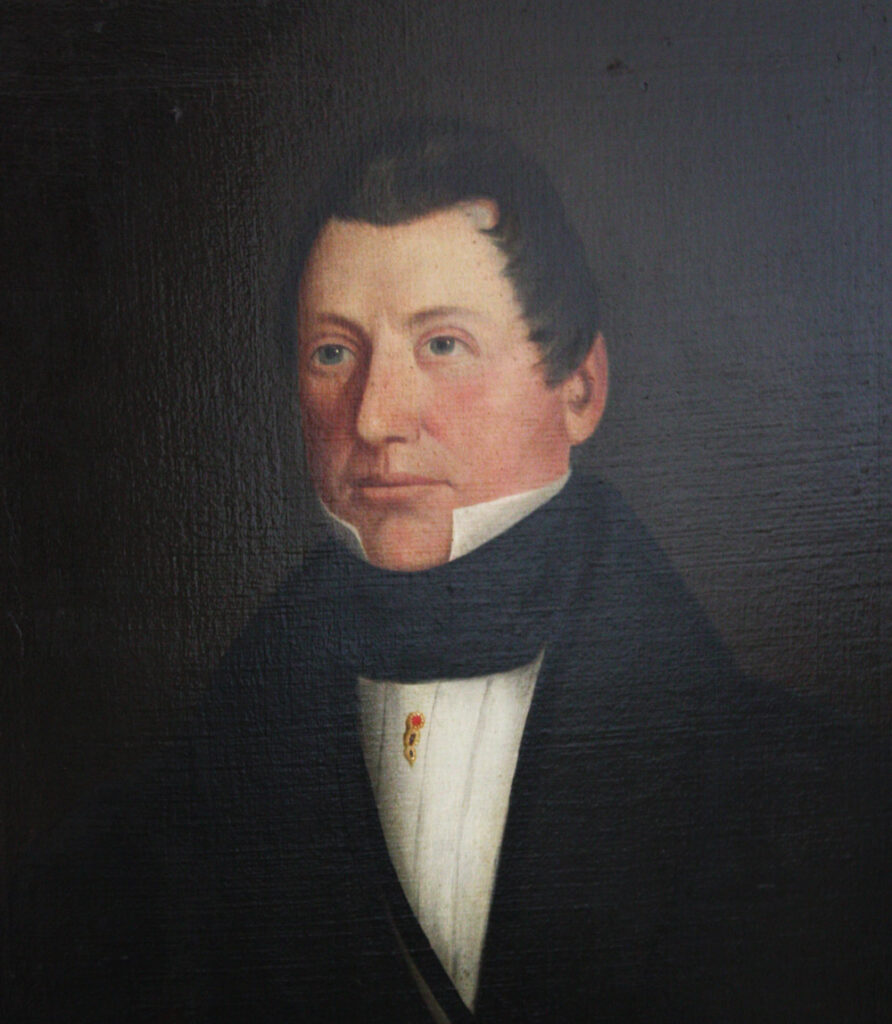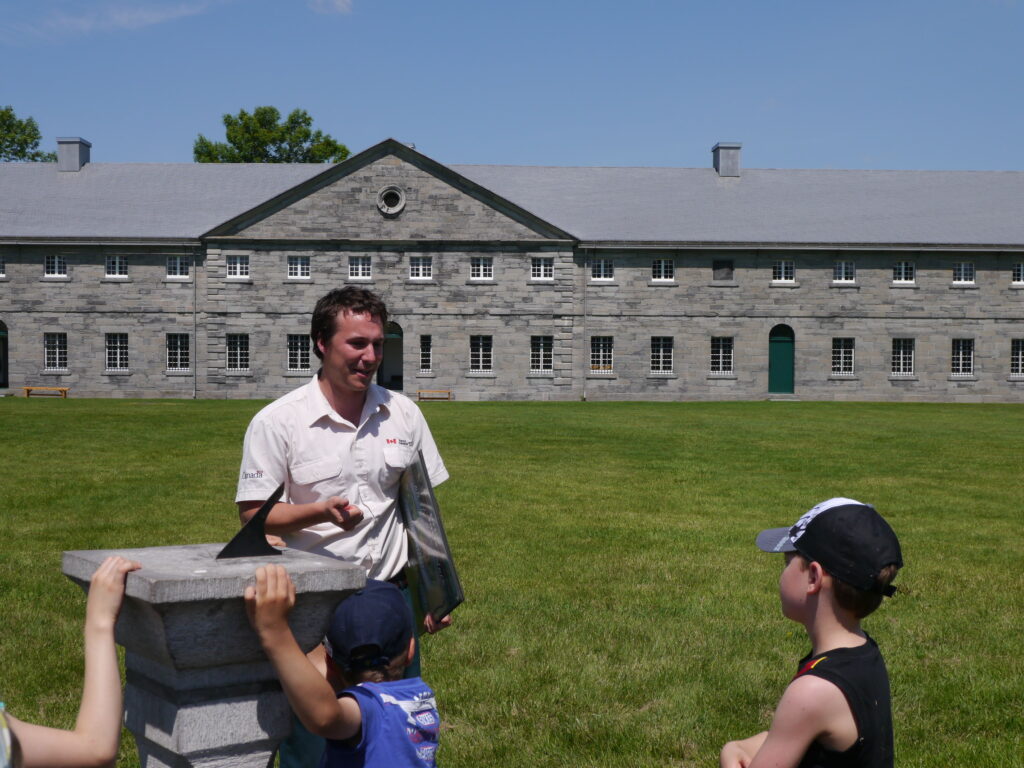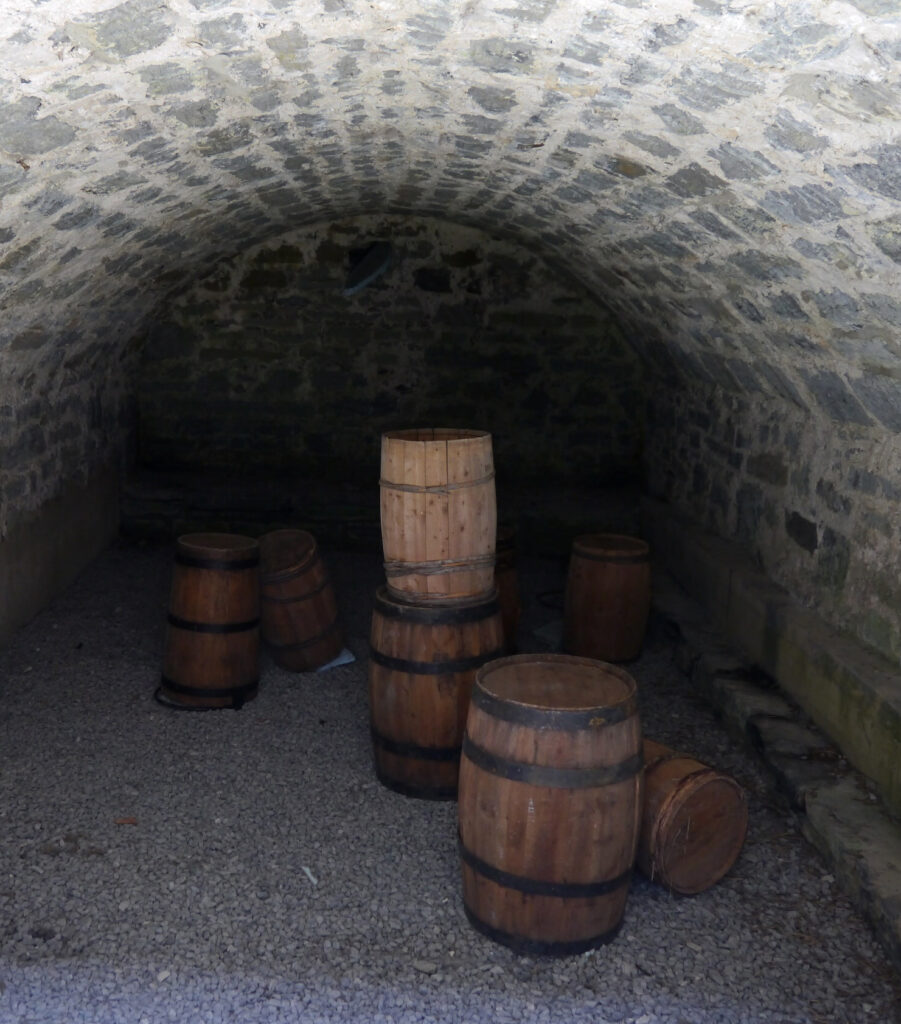When Stanley Bagg signed a contract to excavate the Lachine Canal in 1821, it was the largest and most complex job he had ever taken on. Although he was just 33 years old, this Montreal entrepreneur and his business partners had gained enough experience from a series of projects for the British Army that they were able to land the contract of a lifetime.

Stanley Bagg was born in Massachusetts in 1788 and moved to Lower Canada with his family around 1795. He grew up in La Prairie, where his father ran an inn, across the St. Lawrence River from Montreal. In 1810, when he was 22, Stanley and his father opened the Mile End Tavern at a crossroads just north of the city. The tavern was a great place to make business contacts, and by this time, Stanley was already selling firewood to the British Army.
The army played a huge role in Montreal’s economy at that time. Britain had reorganized its defences of British North America after the American Revolution. In the past, a fort on the cliffs of Quebec City overlooking the St. Lawrence River had protected the colony from attack. Now there was a long southern border to defend and Montreal played a key role in protecting its own location, and in moving troops and equipment to Upper Canada. The army needed firewood to keep its soldiers warm, fresh beef and flour to feed them, and people with horses, carts and bateaux (flat-bottomed river boats) to help with transportation. Large and medium-sized local suppliers bid against each other for these contracts, then usually subcontracted the work to smaller enterprises.
The outbreak of war with the United States in 1812 led to a boost in military spending and provided Stanley with his first big business opportunity. In December 1813, he and business partner Oliver Wait signed a contract to transport sixty long guns (cannons) from Montreal to Kingston, on Lake Ontario.
The contract paid well, but it was a risky undertaking, not only because of the danger posed by the enemy; if they failed to deliver the cannons safely and on time, they would be penalized. The fact that the job was to be done in winter posed an additional challenge. Normally, goods were transported on the water, but the St. Lawrence marked the border between the U.S. and Canada for much of the distance between the two cities, so the cannons were transported on the winter road, hidden from the enemy by the trees. Stanley and Oliver subcontracted the task to others, and the cannons arrived intact.
Over the next several years, Stanley was involved in a variety of projects. He and Oliver transported several large anchors to Kingston for the military, and Stanley contracted to sell beef to the army (the meat was supplied by his future father-in-law, butcher John Clark,) but most of his activities were in the civilian sphere. He ran the tavern and the farm on which it was located; he bought, sold and rented buildings in and around Montreal; he had a share in a steamboat called Car of Commerce; and he was a partner in an unsuccessful dry goods business. For fun, he built a race track near the tavern. Then, in 1818, he placed a notice in the newspaper indicating he planned to move to Upper Canada and sell all his properties in Montreal.
A year later, he had discarded that idea and seized new contracting opportunities with the army. Stanley got married in Montreal on August 9, 1819. Five days later, he and Oliver Wait signed a contract with the army’s engineers to level Montreal’s Citadel Hill. The citadel, where arms and ammunition had been stored since the days of New France, was located in a heavily populated area of the city. The army realized this was dangerous and decided to demolish the building and level the hill. Stanley and Oliver contracted to remove 48,000 cubic yards of earth from the hill and dump it into a hollow area nearby.

The army replaced the old citadel with two new forts, with construction beginning simultaneously in 1819. Stanley, with Oliver Wait and two other partners, Andrew White and Thomas Phillips, worked on both projects.

One of the forts was on Saint Helen’s Island, in the St. Lawrence River near the port, well located to protect the city from an attack by the Americans. The initial phase of this three-year construction project included a blockhouse, powder magazine and storehouses. In the summer of 1821, Bagg and Wait obtained a series of contracts to supply 300,000 bricks and 5,000 cartloads of sand, as well as large amounts of stone, lime, pine, oak and cedar for the new fort.
The other project, Fort Lennox, was on Île aux Noix, on the Richelieu River not far from Lake Champlain and the American border. The French had also used Île aux Noix to defend New France, but the old fortifications were no longer adequate. Stanley and his partners agreed to provide timber and other construction materials for Fort Lennox.
They had not completed these contracts when, in the summer of 1821, there was a call for tenders to excavate the Lachine Canal. The foursome (Bagg, Wait, White and Phillips) were not canal builders, but neither was anyone else in Montreal. What they did have was the experience managing people and moving material required for this huge project.
See also
https://www.writinguptheancestors.ca/2015/02/stanley-bagg-and-lachine-canal-part-1_27.html
and
https://www.writinguptheancestors.ca/2015/03/stanley-bagg-and-lachine-canal-part-2.html
Notes
The main source of this material about the army is an unpublished article by Sherry Olson and Jean-Claude Robert, “Wheelbarrows for His Majesty: the Commissariat and its Contractors in Early Nineteenth-Century Montreal.” The authors based their research on contracts and agreements, many of which were handled by notary Henry Griffin. The agreement to transport guns is the act of Griffin 187-372, 9 December 1813. For the contract regarding the levelling of Citadel Hill, see Griffin 187-2745, 14 August 1819. You can search the indexes to notarial documents online at https://numerique.banq.qc.ca/ressources/details/notaires. Many acts have now been digitized.
Olson, Professor Emeritus of Geography at McGill University, became familiar with the Bagg family while researching a book about the demographics of 19th century Montreal. Written with co-author Patricia Thornton of Concordia University, the book is Peopling the North American City, Montreal 1840-1900. Montreal: McGill-Queen’s University Press, 2011.
During the War of 1812, anyone who had been born in the United States and wanted to remain in British North America had to swear an oath of allegiance to the king, or leave. Both Bagg and Wait were American-born, so they must have been very trustworthy subjects of His Majesty to be allowed to transport arms.
To see a cannon of the type that Bagg and Wait contracted to transport, check out www.youtube.com/watch?v=ISpTzv_nMas. In this video, a 24-pounder long gun is loaded and fired in a demonstration at Fort Wellington, Prescott, Ontario, however, the comments below suggest that the boom in the demonstration was disappointing.
On March 7, 1818, the Montreal Herald ran an ad in which Stanley Bagg announced he was leaving for Upper Canada and wanted to sell his investments and settle his accounts in Montreal. The ad is near the top left of the page. https://news.google.com/newspapers?id=_CE1AAAAIBAJ&sjid=5isDAAAAIBAJ&pg=5665,962917&dq=stanley+bagg+montreal&hl=en I do not know why he wanted to leave, or what made him change his plans.
The Stewart Museum, in the former arsenal of the fort on St. Helen’s Island, is now closed and its collection has been moved to the McCord Museum in downtown Montreal. In the 1960s, Île Sainte-Hélène was one of the sites of Montreal’s world’s fair, Expo 67. The island is now home to Parc Jean-Drapeau.
Fort Lennox National Historic Site, less than an hour from Montreal, is also a great destination for a family outing. Take a picnic. See http://www.pc.gc.ca/eng/lhn-nhs/qc/lennox/index.aspx. Also of interest is Andre Charbonneau’s book The Fortifications of Île aux Noix: a portrait of the defensive strategy on the Upper Richelieu Border in the 18th and 19thcenturies. Ottawa: National Historic Sites, Parks Canada, 1994.
